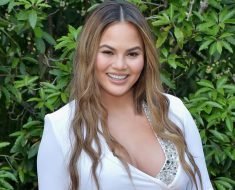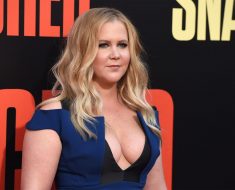My 3-year-old son loves picking up seashells. He combs the beach with laser precision, able to spot a treasure no matter how obscured or buried it may be. And he procures them with gusto, gleefully exclaiming, “Here’s an awesome one!”
Last summer, we made our annual family trek to the beach, and pretty much every day of the trip, he and I trawled the shoreline looking for shells.
But after the first day or so, I began to notice something. While I searched for perfect specimens — symmetrical shells with no breaks or holes or other blemishes — my son was a bit less discriminating. Actually, it seemed like he was intentionally trying to pick up the gnarliest, most pitiful shells he could find.
“Look at this one,” I called to him, holding up a pristine white oyster shell.
He studied it for a second, and then held up a broken piece of a similar carapace, “Yeah, but check this one out!”
At first, I would reply in the affirmative just to humor him, but after a while, I started to realize something. The shells he was choosing actually were awesome.
Yeah, they were broken or oddly shaped or full of holes. But they were interesting.
My bucket full of perfectly shaped, flawless shells was pretty, but it was also boring. I could find the exact same assemblage inside a lamp at the beach house or in a prepackaged bag at a gift shop.
Whereas his bucket was filled with cool colors, textures and shapes — splashes of purple and amber, the juxtaposition of jagged edges alongside sea-smoothed curves, shells that looked more like moon rocks than sea life, riddled with hundreds of tiny holes.
These shells told a story. They hadn’t arrived on the shore in one piece. They’d lost their inhabitants. They’d been battered, beaten and carried who knows how far by the currents, rolled up and down the beach as storms and tides stirred them up from the sea floor.
As I watched my son marvel over these imperfect pieces, I began to see the beauty in broken things. The uneven, misshapen things. The not-quite-right things. The shattered and scarred things.
I’d been wrestling with my own imperfections that week on the beach too. Two years prior, I was diagnosed with breast cancer and the BRCA gene mutation. Though I’d survived both the disease and months of grueling treatment that included chemotherapy and a bilateral mastectomy, my body bore the marks of what I’d been through.
Scars cover my torso, from the angry red slash below my collarbone where my chemo port was inserted to my mastectomy scars to marks left by surgical drains and a preventative oophorectomy due to my BRCA status (the BRCA mutation puts carriers at a higher risk of breast and ovarian cancers, among other types).
While I was never a big fan of my body in a bathing suit, donning one now, with all my weird post-treatment lumps and grooves, has been especially difficult. I’m constantly adjusting my straps and pulling at the fabric to cover the bits that bug me — my reconstructed chest with its board-flat plane abruptly interrupted by the unnatural peak of my implants; my misshapen armpit, still numb from the lymph node removal; my jiggly mom belly, growing by the day due to the effect of medications and treatment-induced early menopause.
During those first few days on the beach, I spent a great deal of time hiding, covering up and doing what I could to disguise the ugly things I hated about my cancer-scarred body. I saw all my new imperfections as a problem, something to shield others from seeing.
I never saw these flaws for what they really were — badges of honor. Symbols of my strength. A physical testament to my will to live. And just like my son’s shells, I’d been through something that could have destroyed me. But it didn’t — I survived. I made it back to shore.

Watching my child marvel at these less-than-ideal shells, seeing his eyes light up at these beautiful treasures, I saw the same excitement and adoration that fills his face when he sees me. Sure, he notices my scars, but just like the marks on his shells, they are simply a small part of something he loves. He doesn’t see the flaws that are so obvious to me — he simply sees the whole of something he loves.
We get so caught up searching for perfection — the right haircut, the perfectly shaped breasts, the thin thighs, the flat stomachs, the smooth skin — that we miss the utter distinctive beauty right in front of our asymmetrical faces.
Those imperfections tell our story: who we are, where we came from, what we’ve been through. They make us interesting. They make us individuals. And whether we choose to believe it or not, they make us beautiful.
We brought a bucket of shells home with us, and they’re spread in a flower bed in our backyard. My son likes to play with them as a reminder of our vacation, and I like to look at them as a reminder to be easier on myself. Like the shells, my post-cancer body has been broken, but not destroyed.
Source: Read Full Article





